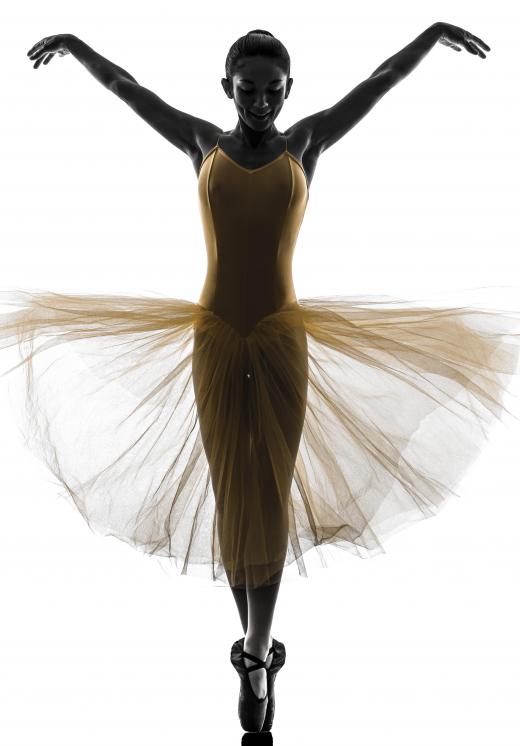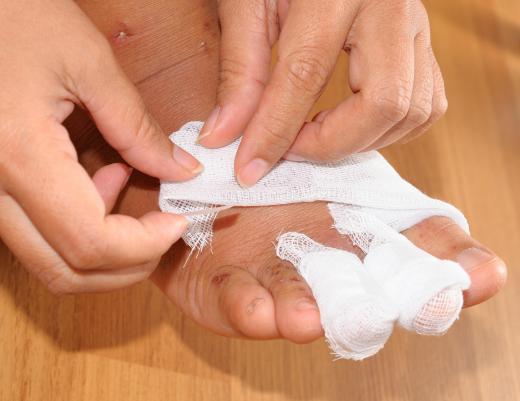To dance en pointe in ballet is to rise up to the toe tips, so that the body’s weight is entirely focused down on that small area. Dancing en pointe usually uses special pointe shoes, which are substantially reinforced, often being crafted with canvas or leather. While it is uncommon, men do in fact dance en pointe on occasion. This is by far the exception, rather than the rule, however, and there are a number of reasons for this.
Dancing en pointe first became popularized in the 1830s, and was used most often in romantic ballet. The look of a ballerina when she is en pointe is meant to be otherworldly, to convey the etherealness of the female form and to reinforce the smooth, graceful motions already present in romantic ballet. Male ballet dancers are not meant to encompass this ideal to the same extent, and therefore it is not as necessary to have them dance en pointe.

Preparing the body to dance en pointe is a rather difficult ordeal. Most ballerinas spend at least a few years of regular practice before they are considered ready to dance en pointe. The bones must have fully formed to ensure that the pressure will not damage the development of the foot, and great care must be taken to use proper form and build sufficient strength. Strength training can be a rigorous endeavor, and injuries are not at all uncommon.

These challenges are all very real for ballerinas, who often weigh less than 100 pounds. For male ballet dancers, who often weigh substantially more than that, the challenge is even greater. Extreme care must be taken in developing strength in the arch and ankles, and for many male ballet dancers it simply is not worth the trouble to be able to dance en pointe. At the same time, some male ballet dancers, including Baryshnikov, have argued for the value of male dancers learning to dance en pointe, if only as a strength and balance exercise, and to foster greater empathy and understanding with their female counterparts.
If one disregards weight as an excuse, there really is no good reason why more men don’t dance en pointe. The general consensus is simply that one doesn’t see male ballet dancers on their toes because choreographers don’t tend to come up with compositions for them. There are a few exceptions to this, including a few shows of Cinderella, and Sir Frederick Ashton’s adaptation of A Midsummer Night’s Dream, in which Bottom the donkey dances en pointe to represent hooves.
One other notable exception is the all-male ballet corps of Les Ballets Trockadero de Monte Carlo, in which a number of the male dancers wear ballerina attire and dance female parts. As the corps focuses primarily on classical and romantic ballet, this means that most of their shows feature many male ballet dancers dancing en pointe. Although the corps is in many ways presented as parody, the technical prowess of the dancers is nonetheless quite formidable, and quite clearly shows the ability of male ballet dancers to dance en pointe with a great deal of skill.
